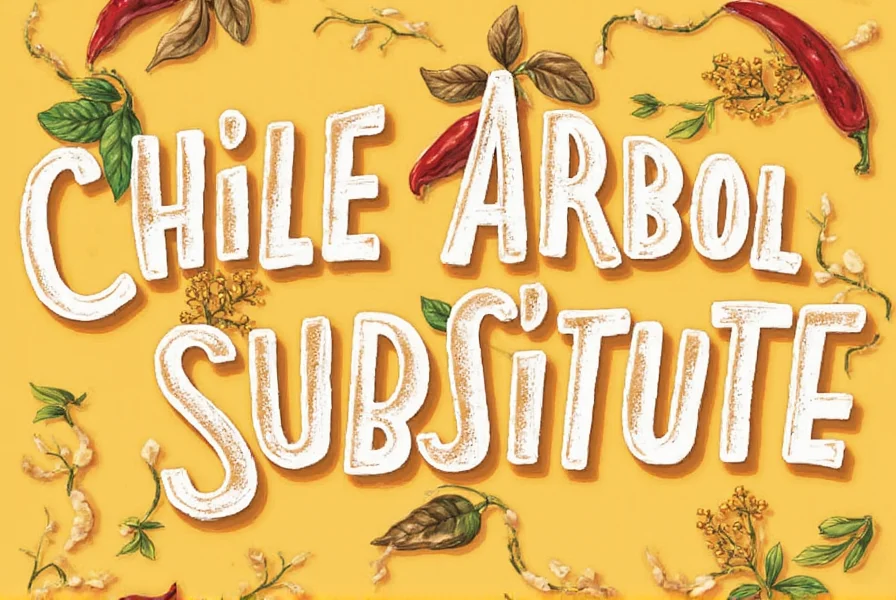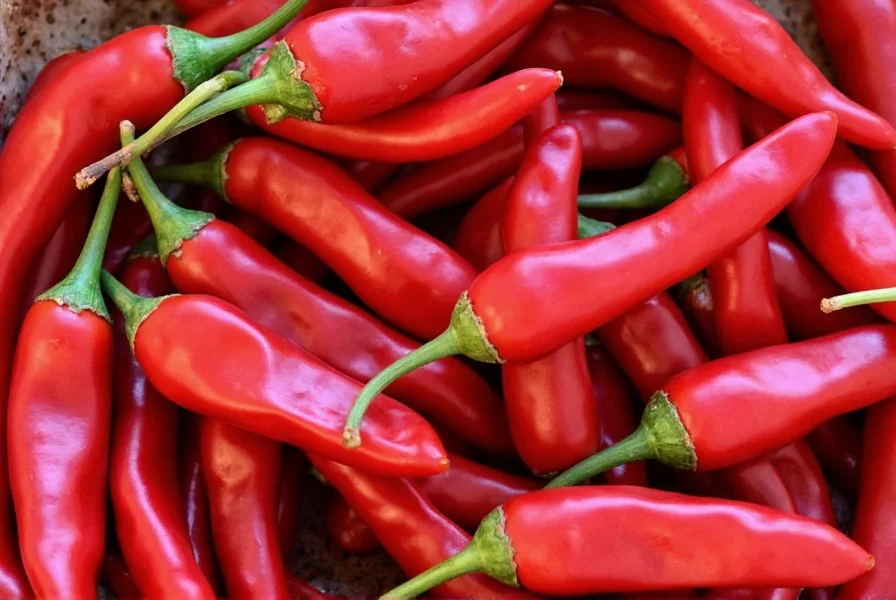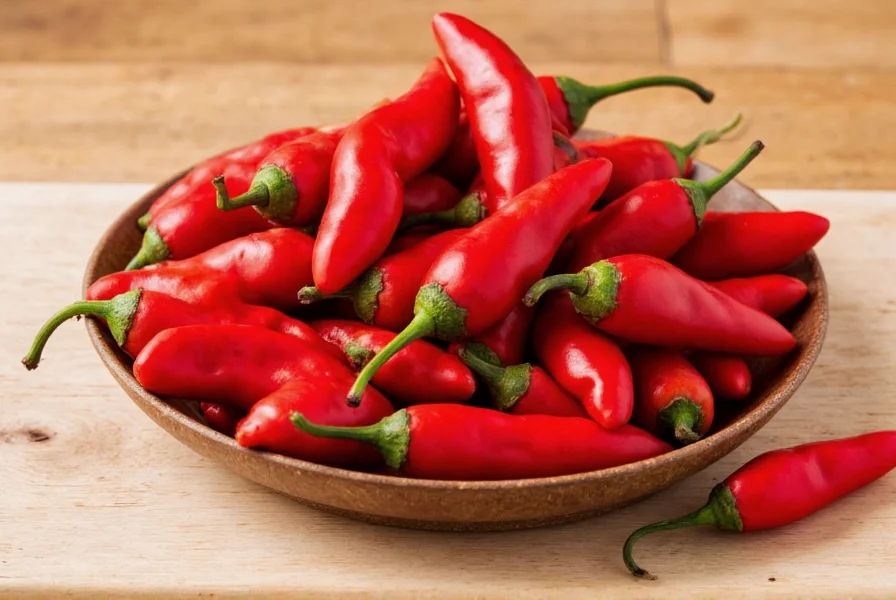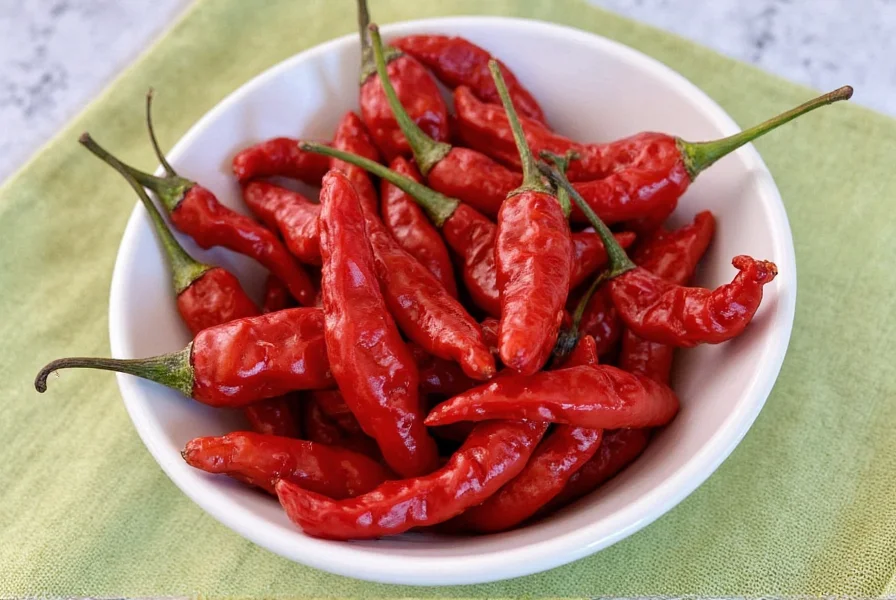Table of Contents
- What Is Guajillo Chile Called in English?
- What Is Guajillo Chile?
- Flavor Profile & Heat Level Explained
- Common Culinary Uses
- Guajillo Compared to Other Dried Chiles
- Buying Guide: Selecting Quality Guajillo Chiles
- Proper Storage Methods
- Frequently Asked Questions
- 5 Authentic Recipes Featuring Guajillo Chile
- Final Thoughts
What Is Guajillo Chile Called in English?
Contrary to what many searchers believe, "guajillo chile" is the exact term used in English. There is no direct English translation - "chile guajillo en inglés" simply means "guajillo chile in English." When cooking or shopping in English-speaking countries, you'll find this ingredient labeled as guajillo chile, guajillo pepper, or dried guajillo. This Mexican culinary staple maintains its Spanish name in English contexts because it refers to a specific variety with no equivalent English term.

If you're searching for "chile guajillo en inglés" because you need the English term for recipes or grocery shopping, now you know: simply ask for "guajillo chile". This prevents confusion with other peppers and ensures you get the authentic ingredient for traditional Mexican dishes like mole sauces and red enchilada sauce.
What Is Guajillo Chile?
The guajillo chile (Capsicum annuum) is the dried form of the mirasol pepper, a long, slender variety that develops a distinctive dark red to reddish-brown color when properly sun-dried. Unlike many peppers that change names completely when dried (like jalapeños becoming chipotles), guajillo retains its name in both fresh and dried forms, though "guajillo" specifically refers to the dried version.
Grown primarily in Mexico's Zacatecas, San Luis Potosí, and Durango regions, guajillos rank as the second most commonly used dried chile in Mexican cuisine after the ancho chile. Their thin, leathery texture and complex flavor profile make them indispensable for authentic Mexican cooking, particularly in northern and central regions where they've been used for centuries.
Flavor Profile & Heat Level Explained
Understanding guajillo's unique flavor is essential for proper usage in recipes. This chile offers a sophisticated balance of sweet berry notes with subtle hints of green tea, cranberry, and pine - quite different from the straightforward heat of more common peppers.
| Characteristic | Details |
|---|---|
| Heat Level (Scoville Scale) | 2,500 – 5,000 SHU (medium heat) |
| Primary Flavor Notes | Fruity, tangy, mild smoke, tea-like |
| Texture When Rehydrated | Smooth, slightly chewy, ideal for sauces |
Compared to other common peppers, guajillos provide noticeable warmth without overwhelming heat. They're significantly milder than chipotles (5,000-10,000 SHU) but offer more complexity than anchos (1,000-2,000 SHU). This makes them perfect for dishes where flavor should shine without excessive spiciness.

Common Culinary Uses
Guajillo chiles form the backbone of numerous authentic Mexican dishes. Their versatile flavor profile works exceptionally well in:
- Traditional mole sauces: Provides the foundational fruitiness in mole poblano and regional moles
- Red enchilada sauce: Creates the vibrant color and complex flavor in authentic northern Mexican versions
- Adobo marinades: Blended with vinegar and spices for meats and vegetables
- Salsa roja: The key ingredient in smooth table salsas served throughout Mexico
- Tinga: Shredded meat stew featuring guajillo's tangy fruitiness
Professional tip: Always remove seeds and veins before using to control heat level while preserving flavor. Toasting dried guajillos in a dry skillet for 15-20 seconds per side before soaking unlocks their full flavor potential - a crucial step many home cooks skip.
Guajillo Compared to Other Dried Chiles
Understanding how guajillo differs from similar chiles helps you make informed substitutions when needed:
| Chile Type | Flavor Profile | Heat Level | Ideal Applications |
|---|---|---|---|
| Guajillo | Fruity, tangy, tea-like notes | Medium (2,500–5,000 SHU) | Red sauces, moles, adobos |
| Ancho | Earthy, sweet, chocolatey | Mild (1,000–2,000 SHU) | Dark moles, moisture-rich sauces |
| Pasilla | Grassy, raisin-like, smoky | Mild-medium (2,500–4,000 SHU) | Dark sauces, stews, moles |
| Chipotle | Smoky, woodsy, bold | Medium-hot (5,000–10,000 SHU) | Meat dishes, salsas, adobos |
The unique combination of moderate heat with pronounced fruitiness makes guajillo irreplaceable in certain traditional recipes. When substituting, consider blending anchos (for earthiness) with California chiles (for fruitiness) to approximate guajillo's distinctive profile.
Buying Guide: Selecting Quality Guajillo Chiles
Choose the best guajillo chiles with these professional tips:
- Visual inspection: Look for deep, uniform red color (avoid brown spots or faded areas)
- Texture test: Should be pliable but not brittle; properly dried chiles bend slightly without cracking
- Aroma check: Fresh specimens emit a pleasant fruity scent with subtle tea notes
- Purchase source: Mexican specialty markets typically offer fresher stock than general grocery stores
Recommended Brands for English-Speaking Markets
- La Morena: Widely available in US supermarkets with consistent quality
- Goya: Reliable option found in most major grocery chains
- MexGrocer: Premium quality available online with detailed origin information
When shopping for "guajillo chile" in English-speaking countries, avoid packages labeled "guajillo chili" (with 'i') as this often indicates lower-quality substitutes. Authentic products will specify "guajillo chile" (with 'e') and typically include origin information like "Product of Mexico."
Proper Storage Methods
Extend your guajillo chiles' shelf life with these storage techniques:
- Short-term (3-6 months): Store in airtight container in cool, dark pantry
- Long-term (6-12 months): Freeze whole chiles in vacuum-sealed bags
- Ground powder: Store in opaque glass jars away from heat sources
- Refrigeration warning: Avoid unless freezing, as moisture causes mold
Signs of deterioration include loss of vibrant color, musty odor, or extreme brittleness. Properly stored guajillos maintain their characteristic fruity aroma for up to a year, while compromised specimens lose flavor complexity and develop off-notes.
Frequently Asked Questions
Is "guajillo chile" the correct English term?
Yes, "guajillo chile" is the standard English term used in culinary contexts, cookbooks, and grocery stores throughout English-speaking countries. The phrase "chile guajillo en inglés" is Spanish for "guajillo chile in English" and doesn't represent the actual English term. Professional chefs and authentic Mexican markets consistently use "guajillo chile" when referring to this ingredient in English.
Why doesn't guajillo chile have an English translation?
Like many specific food ingredients (such as 'salsa' or 'taco'), guajillo retains its Spanish name because it refers to a distinct pepper variety with no direct English equivalent. Similar to how we say 'sriracha' instead of translating it to 'rooster sauce,' culinary terms often preserve their original names when they represent unique products. This prevents confusion with other ingredients and maintains cultural authenticity in recipes.
How do I pronounce "guajillo chile" in English?
In English-speaking culinary contexts, it's pronounced "gwah-HEE-yo cheel" or "wah-HEE-yo cheel" (with the 'g' often softened). The Spanish pronunciation is closer to "wah-HEE-yo," but English speakers frequently add a 'g' sound at the beginning. Both pronunciations are accepted in professional kitchens, though "gwah-HEE-yo" is more common in the United States.
Where can I find guajillo chile in English-speaking countries?
Look in the international foods aisle of major grocery stores (like Walmart, Kroger, or Target), Mexican specialty markets, or online retailers. When searching product listings, use "guajillo chile" (not "chili") for best results. Some stores file them under 'Mexican ingredients' rather than 'spices.' Online, search for "dried guajillo chile" to find authentic Mexican-sourced products rather than substitutes.
What's the difference between "chile" and "chili"?
In culinary terminology, "chile" (with 'e') refers to the pepper itself, while "chili" (with 'i') typically refers to the meat stew (chili con carne). When shopping for the dried pepper, look for "guajillo chile" spelling to ensure you get the authentic ingredient. This distinction is widely recognized in professional cooking circles and specialty food stores throughout English-speaking countries.
5 Authentic Recipes Featuring Guajillo Chile
Experience guajillo's distinctive flavor in these traditional preparations:
- Authentic Red Enchilada Sauce: Blend 8 soaked guajillos with 2 cups broth, 1 onion, and 2 garlic cloves for vibrant, restaurant-quality sauce
- Mole de Olla: This traditional meat and vegetable soup relies on guajillo for its characteristic red color and fruity depth
- Chiles Rellenos Adobo: Stuff poblano peppers with cheese, then coat in guajillo-based adobo sauce
- Traditional Tinga: Shredded chicken or pork simmered in guajillo-tomato sauce with onions and spices
- Salsa Casera: Simple table salsa made from blended guajillos, tomatoes, and cilantro - essential in northern Mexican cuisine

Final Thoughts
Understanding that "guajillo chile" is the correct English term unlocks authentic Mexican cooking for English speakers. This versatile pepper's unique combination of moderate heat and complex fruitiness makes it indispensable for traditional dishes where flavor balance matters more than intense spiciness.
When shopping in English-speaking markets, remember to look for "guajillo chile" (with 'e') rather than "chili" (with 'i') to ensure you're getting the authentic ingredient. Proper selection, storage, and preparation techniques will help you harness guajillo's distinctive flavor in everything from everyday salsas to special occasion moles.
Now that you know exactly what to look for and how to use it, you're ready to create genuinely authentic Mexican dishes that showcase this remarkable chile's full potential.











 浙公网安备
33010002000092号
浙公网安备
33010002000092号 浙B2-20120091-4
浙B2-20120091-4